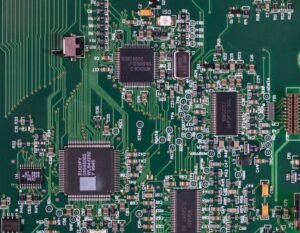Deep Learning vs Machine Learning
Artificial intelligence (AI) has revolutionized numerous industries, and two prominent branches within this field are deep learning and machine learning. While often used interchangeably, deep learning and machine learning are distinct approaches to AI. Understanding the differences between these techniques can help us grasp their unique applications and potential.
Key Takeaways:
- Deep learning and machine learning are two distinct approaches to AI.
- Deep learning models are designed to automatically learn and extract hierarchical representations of data.
- Machine learning models are trained to make predictions or take decisions based on patterns in input data.
What is Deep Learning?
Deep learning is a subset of machine learning that focuses on artificial neural networks and their ability to learn from large amounts of unlabeled data. These networks are inspired by the structure and function of the human brain.
- Deep learning models consist of multiple layers of interconnected artificial neurons, also called neural networks.
- It enables automated feature extraction, eliminating the need for manual feature engineering.
- Deep learning is highly effective for tasks such as image and speech recognition, natural language processing, and autonomous driving.
What is Machine Learning?
Machine learning is a broader field that encompasses various algorithms and techniques that allow computers to learn from data and make predictions or decisions.
- Machine learning models can be trained to find patterns and relationships in data without being explicitly programmed.
- It involves feature engineering, where experts manually select and extract relevant features from the data.
- Machine learning is widely used in areas like predictive analytics, recommendation systems, fraud detection, and supply chain optimization.
Deep Learning vs Machine Learning: A Comparison
| Deep Learning | Machine Learning | |
|---|---|---|
| Learning Approach | Unsupervised Learning | Supervised and Unsupervised Learning |
| Data Requirements | Requires Large Labeled Datasets | Can Work with Small Labeled Datasets |
| Feature Extraction | Automated Feature Extraction | Manual Feature Engineering |
Applications of Deep Learning and Machine Learning
Deep learning and machine learning find applications across various sectors due to their distinct strengths.
- Computer Vision: *Deep learning* is highly effective in computer vision tasks such as object recognition, image classification, and facial recognition.
- Natural Language Processing: *Machine learning* is commonly used for sentiment analysis, chatbots, and language translation applications.
- Healthcare: Both deep learning and machine learning algorithms play important roles in medical imaging analysis, disease diagnosis, and personalized medicine applications.
Deep Learning vs Machine Learning: Performance Comparison
| Deep Learning | Machine Learning | |
|---|---|---|
| Performance Advantages | Highly accurate for complex problems | Faster training and prediction |
| Data Efficiency | Requires large labeled datasets | Can work with smaller labeled datasets |
| Interpretability | Less interpretable due to complex architectures | More interpretable due to explicit features |
In summary, both deep learning and machine learning are powerful approaches to AI, but they differ in terms of learning approach, data requirements, and feature extraction. Deep learning models excel at automatic feature extraction and are highly effective in tasks like image and speech recognition. On the other hand, machine learning models require manual feature engineering but can work with smaller datasets and offer greater interpretability. Understanding the strengths and applications of each technique allows us to leverage them effectively in different domains.

Common Misconceptions
1. Deep Learning is the same as Machine Learning
One common misconception is that deep learning and machine learning are the same thing. While both are subsets of artificial intelligence, they have distinct differences.
- Deep learning is a subset of machine learning
- Deep learning is inspired by the structure and function of the human brain
- Machine learning algorithms are used to train models in both deep learning and traditional machine learning
2. Deep Learning is always better than Machine Learning
Another misconception is that deep learning is always superior to traditional machine learning methods. While deep learning has demonstrated exceptional performance in certain domains, it is not always the best choice for every task or scenario.
- Deep learning requires a large amount of training data
- Traditional machine learning methods are often easier to interpret and explain
- Deep learning models can be computationally expensive to train and deploy
3. Deep Learning can completely replace human intelligence
There is a misconception that deep learning can fully replicate human intelligence and replace the need for human involvement in decision-making processes. However, this is not the case.
- Deep learning models still require human intervention for training and validation
- Human expertise is crucial for interpreting and understanding the results of deep learning models
- Deep learning is a tool that can augment human decision-making, but not replace it entirely
4. Deep Learning doesn’t require feature engineering
Some people believe that deep learning eliminates the need for manual feature engineering. While deep learning models can learn important features through the training process, feature engineering remains a critical step in many cases.
- Feature engineering can help reduce the dimensionality and noise in the input data
- Manual feature engineering can improve the performance and interpretability of deep learning models
- Deep learning can benefit from carefully crafted features that capture domain-specific knowledge
5. Deep Learning is only applicable to large-scale problems
Finally, there is a misconception that deep learning is only applicable to large-scale problems or datasets. While deep learning has been widely adopted in big data scenarios, it can also be effectively applied to smaller-scale problems.
- Deep learning can be used for tasks such as image and speech recognition in small-scale applications
- Deep learning models can be pretrained on large datasets and fine-tuned for specific tasks
- Even with smaller datasets, deep learning models can achieve good performance with appropriate regularization techniques

Introduction
In the rapidly advancing field of artificial intelligence, two prominent subfields have emerged: deep learning and machine learning. Deep learning is a subset of machine learning that focuses on algorithms inspired by the structure and function of the brain’s neural network. On the other hand, machine learning refers to the application of statistical models and algorithms that allow systems to learn from data without being explicitly programmed. This article aims to compare and contrast these two approaches. Let’s explore the key differences between deep learning and machine learning in the following tables:
Table 1: Architectural Inspiration
Deep learning draws inspiration from the human brain’s interconnected network of neurons, imitating its structure and functionality. In contrast, machine learning algorithms are designed based on statistical techniques, probability theory, and linear algebra.
| Deep Learning | Machine Learning |
|---|---|
| Recreates neural networks | Relies on statistical models |
| Utilizes hierarchical representations | Focuses on patterns and correlations |
Table 2: Data Requirements
Deep learning algorithms often demand massive amounts of labeled data to train complex neural networks and achieve higher accuracy. Machine learning algorithms, in comparison, can work effectively with relatively smaller datasets.
| Deep Learning | Machine Learning |
|---|---|
| Requires large labeled datasets | Handles smaller datasets efficiently |
| Needs significant computational resources | Less computationally intensive |
Table 3: Feature Extraction
Feature extraction refers to the process of identifying and selecting the most relevant features in a dataset. Deep learning algorithms automatically extract intricate features from raw data, while machine learning algorithms typically require manual feature engineering.
| Deep Learning | Machine Learning |
|---|---|
| Automated feature extraction | Manual feature engineering |
| Handles unstructured and raw data effectively | Relies on preprocessed and engineered features |
Table 4: Interpretability
Deep learning models are often considered black boxes, making it challenging to understand and interpret their decisions. Conversely, machine learning models usually provide more interpretability due to their reliance on explicit rules and feature importance.
| Deep Learning | Machine Learning |
|---|---|
| Less interpretable | More interpretable |
| Complex, hierarchical representations | Explicit, rule-based decisions |
Table 5: Training Time
The training time for deep learning models tends to be longer due to their complex architectures and the need for vast amounts of computational resources. By contrast, machine learning models typically have faster training times.
| Deep Learning | Machine Learning |
|---|---|
| Longer training times | Faster training times |
| Computationally intensive | Less computationally demanding |
Table 6: Performance on Big Data
Both deep learning and machine learning algorithms can handle big data, but deep learning algorithms excel in large-scale datasets due to their ability to automatically learn intricate patterns and representative features.
| Deep Learning | Machine Learning |
|---|---|
| Effective on big data | Adaptable to big data |
| Automatic learning of complex patterns | Reliance on explicit feature engineering |
Table 7: Application Domains
Deep learning algorithms have seen remarkable success in fields like image and speech recognition, natural language processing, and autonomous driving. Conversely, machine learning algorithms prove beneficial in areas like recommender systems, fraud detection, and email filtering.
| Deep Learning | Machine Learning |
|---|---|
| Image and speech recognition | Recommender systems |
| Natural language processing | Fraud detection |
| Autonomous driving | Email filtering |
Table 8: Scaling Ability
Deep learning models can scale well with increasing data and complexity, owing to their hierarchical structure. Machine learning models may exhibit limitations in handling exponential growth in datasets or complexity.
| Deep Learning | Machine Learning |
|---|---|
| Scale well with complexity | May exhibit limitations |
| Hierarchical structure supports scalability | Potential constraints with exponential growth |
Table 9: Training Efficiency
Deep learning algorithms require substantial computational resources, resulting in higher energy consumption during training. Machine learning algorithms tend to be more energy-efficient in comparison.
| Deep Learning | Machine Learning |
|---|---|
| Higher energy consumption during training | More energy-efficient |
| Demands significant computational resources | Less demand for computational power |
Table 10: Flexibility
Deep learning algorithms offer remarkable flexibility, as they can automatically learn and adapt to changing data patterns. Machine learning algorithms, though less flexible, provide more control through explicit rule setting.
| Deep Learning | Machine Learning |
|---|---|
| High flexibility | Control through explicit rules |
| Automatic learning and adaptation | Predetermined rule-based approach |
Conclusion
In conclusion, deep learning and machine learning represent distinct approaches to artificial intelligence. Deep learning excels at automatically learning complex patterns, handling unstructured data, and achieving state-of-the-art performance in domains like image recognition and natural language processing. On the other hand, machine learning provides interpretability, requires less computational resources, and proves advantageous in domains where explicit rule-based decisions are crucial. Choosing between the two depends on the specific requirements and constraints of the problem at hand. As technology progresses, the interplay between deep learning and machine learning continues to shape the future of AI, driving innovation and transformation across various industries.
Frequently Asked Questions
What is the difference between Deep Learning and Machine Learning?
Deep learning is a subset of machine learning that focuses on training artificial neural networks with multiple layers, allowing the network to learn complex patterns and make accurate predictions. Machine learning, on the other hand, is a broader concept that includes various algorithms and techniques for training computers to perform specific tasks without being explicitly programmed.
How do Deep Learning and Machine Learning models learn?
Both Deep Learning and Machine Learning models learn by processing large amounts of data and making connections or patterns from it. Deep Learning models use artificial neural networks with multiple hidden layers to learn hierarchical representations of data, while Machine Learning models use algorithms that analyze and generalize patterns from input data.
Which approach is more suitable for image recognition tasks?
Deep Learning is often more suitable for image recognition tasks due to its ability to learn and analyze complex patterns within images. Convolutional Neural Networks (CNNs), a type of Deep Learning model, have shown remarkable performance in image classification, object detection, and other computer vision tasks.
What are the advantages of Deep Learning over Machine Learning?
Deep Learning offers several advantages over traditional Machine Learning approaches. It can automatically learn feature representations from raw data, eliminating the need for manual feature engineering. Deep Learning models can also handle large-scale datasets efficiently and achieve state-of-the-art performance in various domains, such as natural language processing, computer vision, and speech recognition.
When is Machine Learning more appropriate than Deep Learning?
Machine Learning may be more appropriate than Deep Learning when the task at hand doesn’t require analyzing complex patterns or when dealing with limited amounts of labeled data. Machine Learning models can sometimes provide simpler and interpretable solutions as compared to complex Deep Learning models, making them a more suitable choice for certain applications.
Can Deep Learning models work with structured data?
While Deep Learning models have primarily been applied to unstructured data like images, audio, and text, they can also work with structured data. Techniques such as Recurrent Neural Networks (RNNs) and Long Short-Term Memory (LSTM) networks can process sequential and time-series data, making Deep Learning models suitable for structured data tasks like stock market predictions or weather forecasting.
Which approach requires more computational resources, Deep Learning or Machine Learning?
Deep Learning models generally require more computational resources than traditional Machine Learning models. The training process for Deep Learning involves numerous computations performed by neural networks with multiple layers. Training Deep Learning models often requires high-performance GPUs and large amounts of memory to efficiently process complex data.
What are some popular Deep Learning frameworks used in the industry?
Some of the popular Deep Learning frameworks used in the industry include TensorFlow, PyTorch, Keras, and Caffe. These frameworks provide high-level abstractions, efficient computation, and support for building and training Deep Learning models, making them widely adopted for various Deep Learning applications.
Can Deep Learning and Machine Learning models be combined?
Yes, Deep Learning and Machine Learning models can be combined to leverage the strengths of both approaches. For example, one can use Deep Learning models to automatically extract features from raw data and then apply traditional Machine Learning algorithms for classification or regression tasks. This hybrid approach can often lead to improved performance and interpretability.
What are some limitations of Deep Learning?
Despite their remarkable capabilities, Deep Learning models have certain limitations. They often require a large amount of annotated training data to generalize well to new examples. Deep Learning models are also highly dependent on computational resources, making them less accessible in resource-constrained environments. Additionally, interpreting the decisions made by complex Deep Learning models is still an active area of research.




